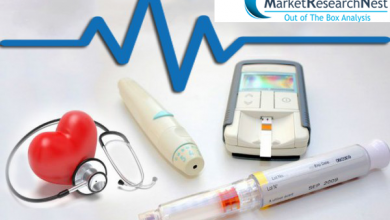Researchmoz added Most up-to-date research on “Biodiesel Catalyst Market - Global Industry Analysis, Size, Share, Growth, Trends, and Forecast 2017 - 2025” to its huge collection of research reports.
Biodiesel can be used as alternative fuel for diesel engines. It is made from recycled cooking oil, soybean oil, and animal fat. Biodiesel is produced through a chemical process called transesterification. Soybean oil can also be substituted with straight vegetable oil, palm oil, or rapeseed oil. The transesterification reaction results in two products: biodiesel and glycerin (byproduct).
Request Sample Copy of Report @ https://www.researchmoz.us/enquiry.php?type=S&repid=1448606
Straight vegetable oil can directly be used as a substitute for fossil diesel. However, it is relatively viscous and leads to poor atomization of fuel, incomplete combustion, choking of fuel injectors, and accumulation of fuel in lubricating oil. A catalyst, which can either be an acid or a base, performs the function of accelerating the transesterification reaction without actually participating in it.
Three basic routes can be employed to produce biodiesel from oils and fat: base catalyzed transesterification of oil, direct acid catalyzed transesterification of oil, and conversion of oil to fatty acids and then to biodiesel. However, base catalyzed transesterification of oil is the commonly used method to produce biodiesel. This process is also economical and requires low temperatures and pressures. During the process, the alcohol reacts with fatty acids to produce biodiesel, which is chemically a mono-alkyl ester and crude glycerol. Methyl ester and ethyl ester are the commonly used biodiesel. Either sodium hydroxide or potassium hydroxide can be used as a catalyst for the production of methyl ester biodiesel. However, potassium hydroxide is more suitable for the production of ethyl ester biodiesel.
Biodiesel offers several advantages. For instance, it is rapidly biodegradable and completely non-toxic. The net output of carbon in the form of carbon dioxide after combustion of biodiesel is also negligible. Therefore, biodiesel is described as being ‘carbon neutral’. Biodiesel reduces greenhouse gas emission by at least 57% and up to 86% compared to petroleum diesel. This makes it one of the practical and cost-effective ways to address climate change. Biodiesel is made from natural renewable resources. It is non-toxic and biodegrades quickly. Thus, use of biodiesel reduces human dependence on imported fuel and lowers the harsh effects of greenhouse gases on the environment. Biodiesel catalysts are easily available and their price is also fairly comparable. Handling biodiesel catalysts is easy, since the catalysts and reactants are in the same phase. These advantages coupled with the increase in need to make use of biodiesel as fuel is expected to boost the biodiesel catalyst market in the next few years.
Homogeneous catalysts used in the production of biodiesel face certain disadvantages. When acid catalyst is used, water gets formed during acid esterification. This hampers the process, thereby adding to the cost. Sulfuric acid and sodium methylate, if used as catalysts, are corrosive. Thus, they are difficult to handle. Sodium methylate poses handling problems, as it absorbs moisture. Thus, it has to be continuously kept under a nitrogen blanket. These minor drawbacks are likely to hamper the biodiesel catalyst market in the near future.
Based on type, the biodiesel catalyst market can be bifurcated into homogeneous catalysts, which were traditionally used in the transesterification reaction for producing biodiesel; and heterogeneous catalysts, which are currently being used for producing biodiesel. Homogeneous catalysts function in a single, uniform phase (liquid, gaseous, etc.) as a reactant. Usually, homogeneous catalyst is dissolved in the solvent. In case of heterogeneous catalysts, the phase of the catalyst and the reactant are different. Heterogeneous catalysts usually exist in the solid state. These heterogeneous catalysts act on the substrate in a liquid or gaseous reaction mixture. Homogeneous and heterogeneous catalysts can be classified into acid catalyst and base catalyst. Sodium hydroxide and potassium hydroxide are used as alkaline homogeneous catalysts. In cases involving high content of free fatty acids during biodiesel production, sulfuric acid is used as a catalyst during the esterification process, while sodium methylate is employed as a catalyst during transesterification.
Browse Detail Report @ https://www.researchmoz.us/biodiesel-catalyst-market-global-industry-analysis-size-share-growth-trends-and-forecast-2017-2025-report.html
Several improvements are being carried out to improve the performance of biodiesel catalysts. For instance, JatroDiesel has developed heterogeneous catalysts, which are recyclable. These heterogeneous catalysts provide significant cost and operational advantage.
Based on geography, the biodiesel catalyst market can be segmented into North America, Latin America, Europe, Asia Pacific, and Middle East & Africa. The biodiesel catalyst market is seen to provide job opportunities in numerous sectors like agriculture, chemicals, biotechnology and many more in developing nations in India and China. This is assumed to boost up the biodiesel catalyst market in Asia Pacific. Abundant availability of rapeseed oil is anticipated to propel the biodiesel catalyst market in Europe. Rise in technological advancements is estimated to offer lucrative opportunities to the biodiesel catalyst market in North America in the near future.
Key players operating in the biodiesel catalyst market include Evonik Industries, BASF Corporation, TSS Group, Dupont, DOW Chemical Company, Albemarle Corporation, Sud-Chemie Chemicals.
The report offers a comprehensive evaluation of the market. It does so via in-depth qualitative insights, historical data, and verifiable projections about market size. The projections featured in the report have been derived using proven research methodologies and assumptions. By doing so, the research report serves as a repository of analysis and information for every facet of the market, including but not limited to: Regional markets, technology, types, and applications.
The study is a source of reliable data on:
- Market segments and sub-segments
- Market trends and dynamics
- Supply and demand
- Market size
- Current trends/opportunities/challenges
- Competitive landscape
- Technological breakthroughs
- Value chain and stakeholder analysis
The regional analysis covers:
- North America (U.S. and Canada)
- Latin America (Mexico, Brazil, Peru, Chile, and others)
- Western Europe (Germany, U.K., France, Spain, Italy, Nordic countries, Belgium, Netherlands, and Luxembourg)
- Eastern Europe (Poland and Russia)
- Asia Pacific (China, India, Japan, ASEAN, Australia, and New Zealand)
- Middle East and Africa (GCC, Southern Africa, and North Africa)
The report has been compiled through extensive primary research (through interviews, surveys, and observations of seasoned analysts) and secondary research (which entails reputable paid sources, trade journals, and industry body databases). The report also features a complete qualitative and quantitative assessment by analyzing data gathered from industry analysts and market participants across key points in the industry’s value chain.
A separate analysis of prevailing trends in the parent market, macro- and micro-economic indicators, and regulations and mandates is included under the purview of the study. By doing so, the report projects the attractiveness of each major segment over the forecast period.
Highlights of the report:
- A complete backdrop analysis, which includes an assessment of the parent market
- Important changes in market dynamics
- Market segmentation up to the second or third level
- Historical, current, and projected size of the market from the standpoint of both value and volume
- Reporting and evaluation of recent industry developments
- Market shares and strategies of key players
- Emerging niche segments and regional markets
- An objective assessment of the trajectory of the market
- Recommendations to companies for strengthening their foothold in the market
Browse Detail Report @ https://www.researchmoz.us/biodiesel-catalyst-market-global-industry-analysis-size-share-growth-trends-and-forecast-2017-2025-report.html
About ResearchMoz
ResearchMoz is the one stop online destination to find and buy market research reports & Industry Analysis. We fulfil all your research needs spanning across industry verticals with our huge collection of market research reports. We provide our services to all sizes of organisations and across all industry verticals and markets. Our Research Coordinators have in-depth knowledge of reports as well as publishers and will assist you in making an informed decision by giving you unbiased and deep insights on which reports will satisfy your needs at the best price.
For More Information Kindly Contact:
ResearchMoz
Mr. Nachiket Ghumare,
Tel: +1-518-621-2074
USA-Canada Toll Free: 866-997-4948
Email: [email protected]
For More Reports Visit @ http://marketresearchlatestreports.blogspot.in/

